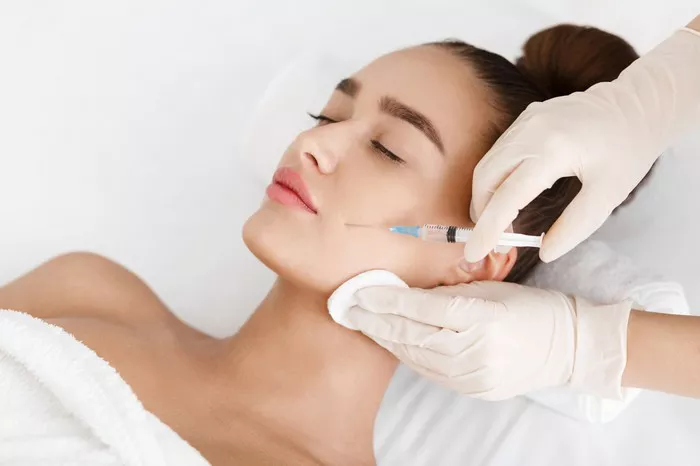Nasolabial folds, commonly referred to as smile lines or laugh lines, are the lines that extend from the sides of the nose to the corners of the mouth. While these lines are a natural part of the aging process, they can sometimes become more prominent and contribute to an aged appearance. Fortunately, there are various treatments available to address nasolabial folds and restore a more youthful and refreshed look. In this article, we will explore the best treatments for nasolabial folds, their benefits, and considerations to help individuals make informed decisions for achieving smoother and more rejuvenated skin.
Understanding Nasolabial Folds:
Nasolabial folds are formed due to a combination of factors, including the natural loss of skin elasticity, volume, and the repetitive movements of facial muscles. As we age, the skin’s collagen and elastin fibers weaken, contributing to the development of these lines.
Choosing the Best Treatment for Nasolabial Folds:
Selecting the most effective treatment for nasolabial folds depends on individual factors such as skin type, severity of folds, and personal preferences. Here are some of the best treatment options available:
a. Dermal Fillers: Dermal fillers, such as hyaluronic acid-based fillers like Juvederm and Restylane, are popular choices for addressing nasolabial folds. These injectable fillers add volume and plumpness to the area, reducing the appearance of deep lines and wrinkles. The results are natural-looking and can last for several months.
b. Botox or Dysport: While Botox and Dysport are more commonly associated with treating dynamic wrinkles, they can also be used to soften the appearance of nasolabial folds. These neurotoxins relax the muscles in the treated area, which can help smooth out the lines and create a more youthful appearance.
c. Laser Skin Resurfacing: Laser treatments, such as fractional laser therapy, stimulate collagen production and improve skin texture. By targeting the skin’s deeper layers, laser resurfacing can help reduce the depth of nasolabial folds and enhance overall skin quality.
d. Radiofrequency (RF) Microneedling: RF microneedling combines microneedling with radiofrequency energy to tighten the skin and stimulate collagen production. This treatment can improve the appearance of nasolabial folds by enhancing skin elasticity and texture.
e. Surgical Options: For individuals with severe nasolabial folds, surgical procedures like facelifts or midface lifts may be considered. These surgical interventions can provide longer-lasting results by repositioning facial tissues and tightening loose skin.
Benefits of Nasolabial Fold Treatments:
Each treatment option offers unique benefits that cater to different needs and preferences:
a. Immediate Results: Dermal fillers and neurotoxins provide immediate results, with improvements noticeable shortly after the treatment.
b. Minimal Downtime: Non-surgical treatments generally require minimal downtime, allowing individuals to resume their daily activities shortly after the procedure.
c. Gradual Improvement: Laser and RF treatments stimulate collagen production over time, leading to gradual and natural-looking improvements.
d. Customizable: Each treatment can be customized to address individual concerns and desired outcomes.
e. Temporary or Long-Lasting: Depending on the chosen treatment, results can last from a few months (dermal fillers) to several years (surgical options).
Factors to Consider:
When choosing the best treatment for nasolabial folds, consider the following factors:
a. Severity of Folds: The severity of your nasolabial folds will impact the most suitable treatment. Less severe lines may respond well to non-surgical options, while deeper folds might require more extensive interventions.
b. Age and Skin Condition: Your age and overall skin condition will influence the treatment plan. Younger individuals may benefit from less invasive options, while those with more advanced signs of aging might require more comprehensive treatments.
c. Budget and Time: Consider the cost of the treatment and whether you are looking for a temporary or longer-lasting solution.
d. Medical History and Preferences: Consult with a qualified healthcare provider to ensure that you are a suitable candidate for the chosen treatment. Discuss your preferences and goals during the consultation.
Consultation with a Professional:
Before undergoing any treatment for nasolabial folds, it’s essential to consult with a licensed and experienced skincare professional or healthcare provider. A thorough consultation will help determine the most appropriate treatment plan based on your unique needs and goals.
Conclusion:
The best treatment for nasolabial folds depends on various factors, including the severity of the folds, personal preferences, and desired outcomes. Whether you opt for dermal fillers, Botox, laser treatments, orsurgical options, there is a range of effective treatments available to address these lines and rejuvenate your appearance. By understanding the benefits of each treatment, considering individual factors, and consulting with a qualified professional, you can make an informed decision that aligns with your goals for achieving smoother, more youthful-looking skin and enhancing your overall confidence.

